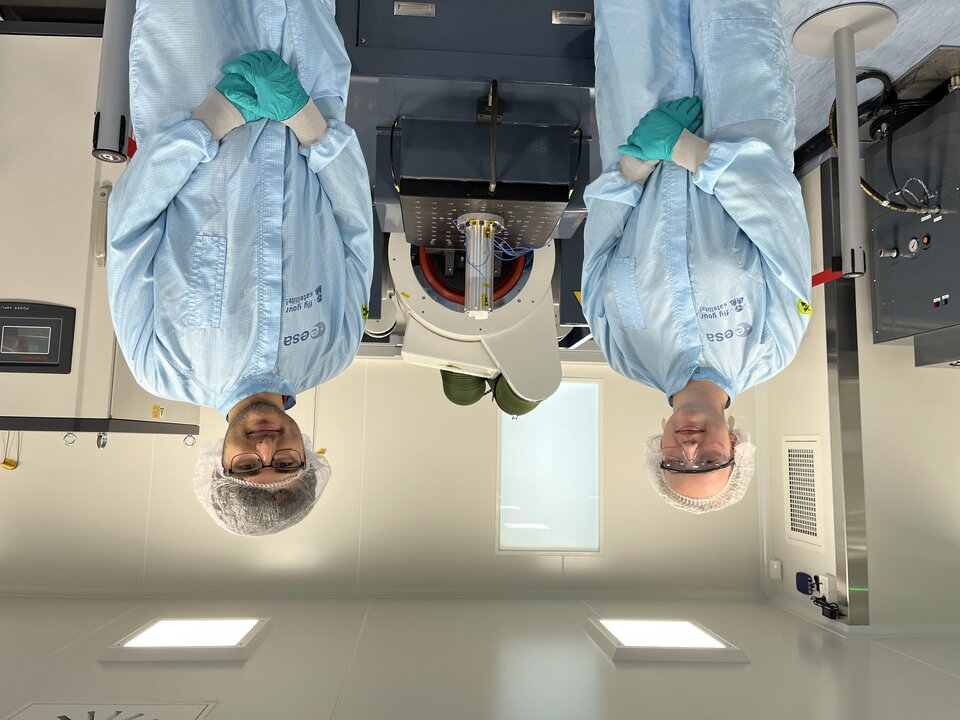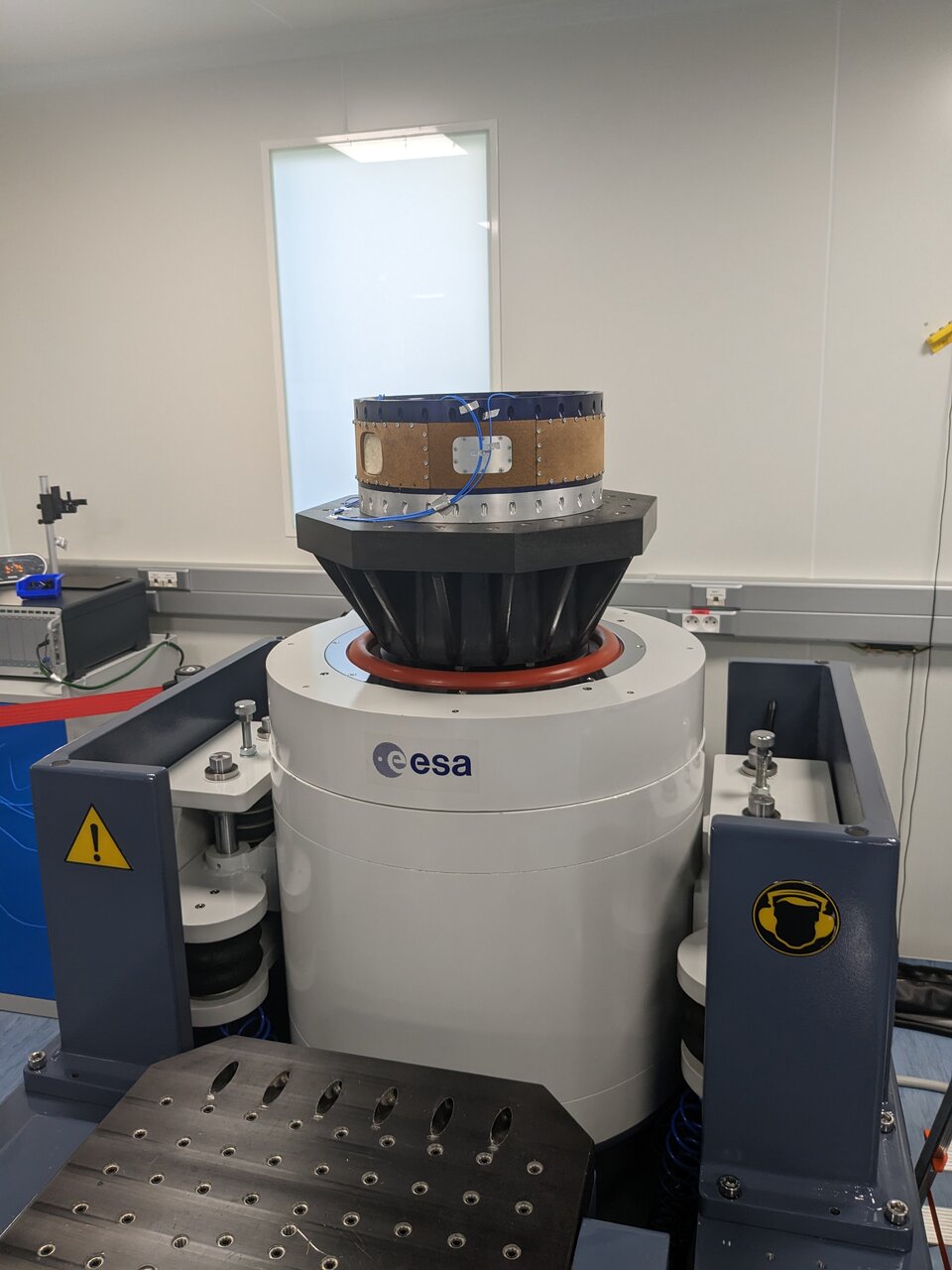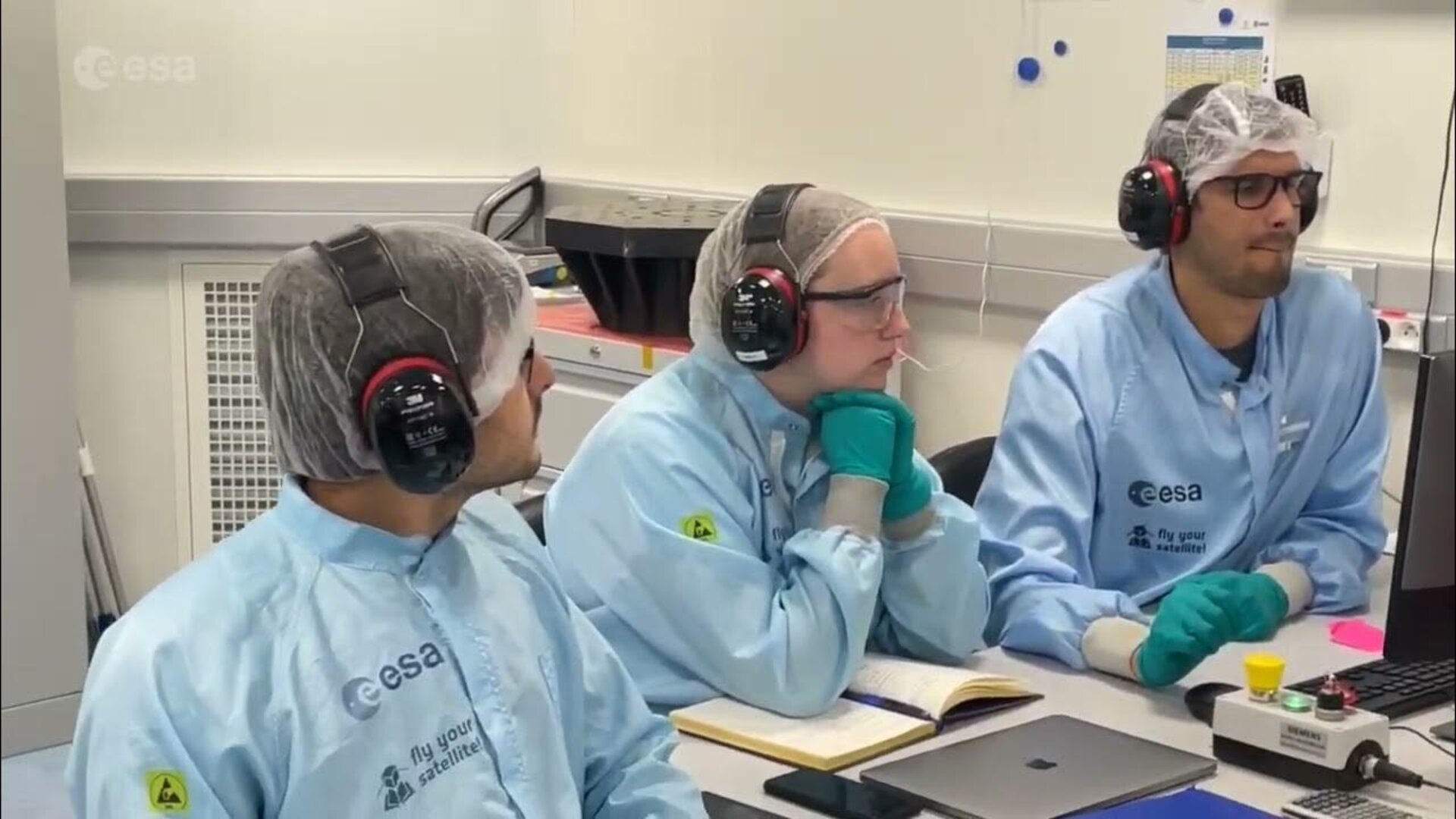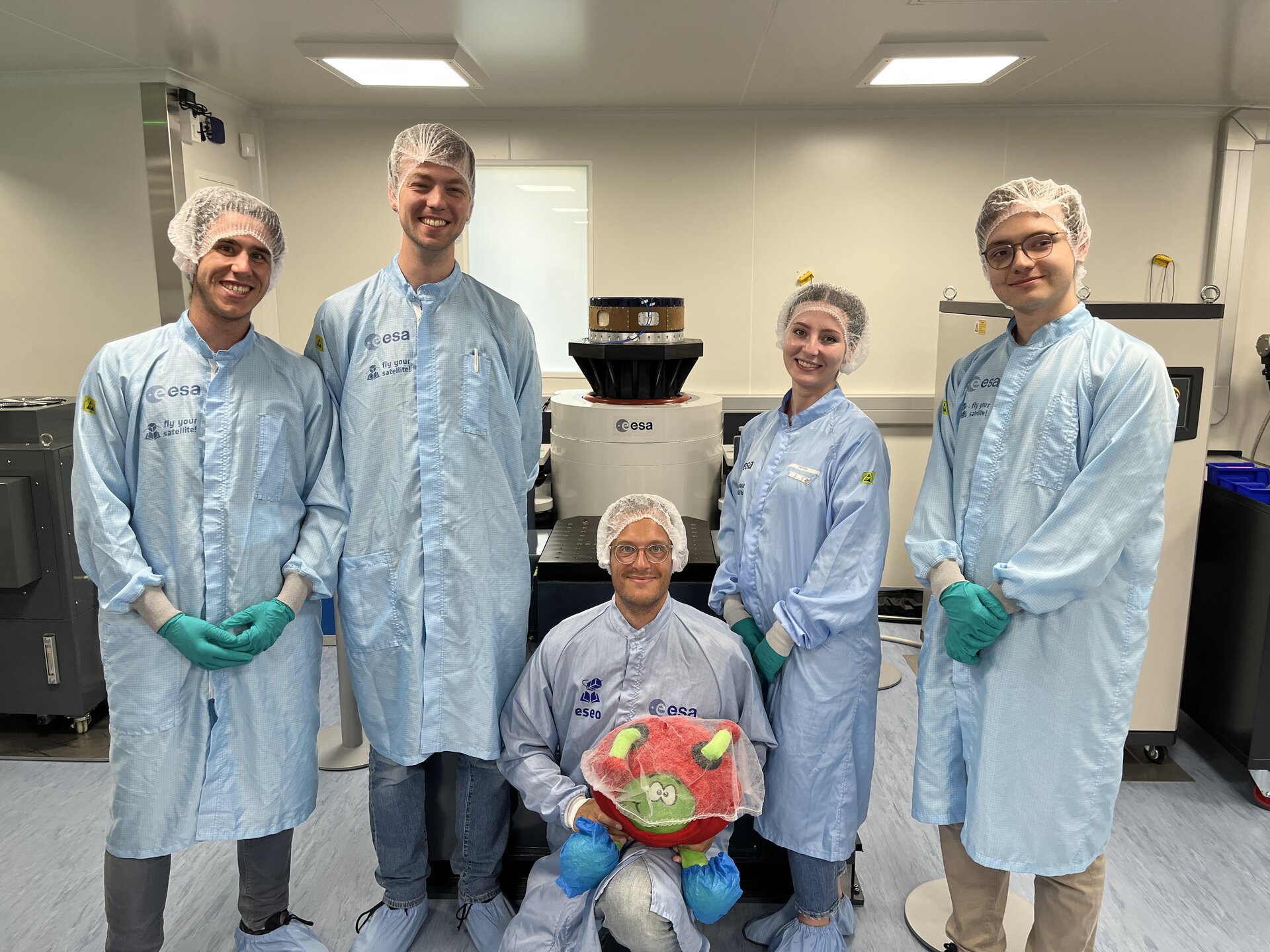DARE team passes vibration tests of rocket subsystems
The Fly Your Satellite! Test Opportunities are not only open for satellites. This was demonstrated during the last two weeks, when six REXUS students of the Delft Aerospace Rocket Engineering (DARE) rocketry team of the Delft University of Technology went to the CubeSat Support Facility of ESEC-Galaxia to perform vibration tests for two different rocket subsystems, characterizing their response to vibrational loads expected during a rocket launch.

From 05 to 15 June 2023, the students worked at the CubeSat Support Facility’s workshop and cleanroom, where they prepared and tested two test items under sounding rocket-representative vibration loads. The vibration test on the shaker system simulates the launch with representative loads. The items were subjected to three different types of vibration tests (Sine, Random and resonance search) in order to simulate the environment of the rocket and to prove that the experiments can withstand such loads. Testing was performed in all 3 axes of the test items to ensure the structural integrity of the system.
The first test item was a parachute mortar system, intended to be used on DARE’s student rockets. The team aimed to verify leak tightness and structural integrity of the system under vibrational loads similar to the loads expected during a rocket launch.

The second item was the Supersonic Heatshield Experiment Aboard REXUS (SHEAR) experiment, which is scheduled to fly on a REXUS sounding rocket in March 2024 through their participation in the REXUS/BEXUS programme. The SHEAR student team aims to test a self-developed heat shield made of an alginate and montmorillonite nanocomposite foam under real flight conditions. The vibration test in the CubeSat Support Facility was required to demonstrate that the heatshield material can endure the vibrational loads expected during a REXUS launch without experiencing cracking or other defects.
Access to the test facilities was made possible through participation in the Fly Your Satellite! “Test Opportunities” programme. Next, to access to state-of-the-art testing facilities, students also received support and training during the preparation of their test campaign.
The conclusion of the test campaign is not the end of the student’s participation in the “Test Opportunities” programme. After two weeks of intense vibration testing, the students left with lots of valuable test data, which they will further analyse and compile into a test report.

In addition, the CubeSat Support Facility is a classroom, and so throughout the week, the students learned about running a test campaign to professional standards with careful support from ESA Education staff.
Ultimately, the students adjusted admirably to performing lab work and responded to the activities requested by the plan commendably, eventually yielding to passing a key milestone towards SHEAR launch!
If you are interested to test your student project in the CubeSat Support Facility as well, check out here. New test windows for the “Test Opportunities” programme are opened on a regular basis.
And if you have an idea for an experiment to be flown on a stratospheric balloon or suborbital rocket, check out the REXUS/BEXUS call for proposals.


Access the video


